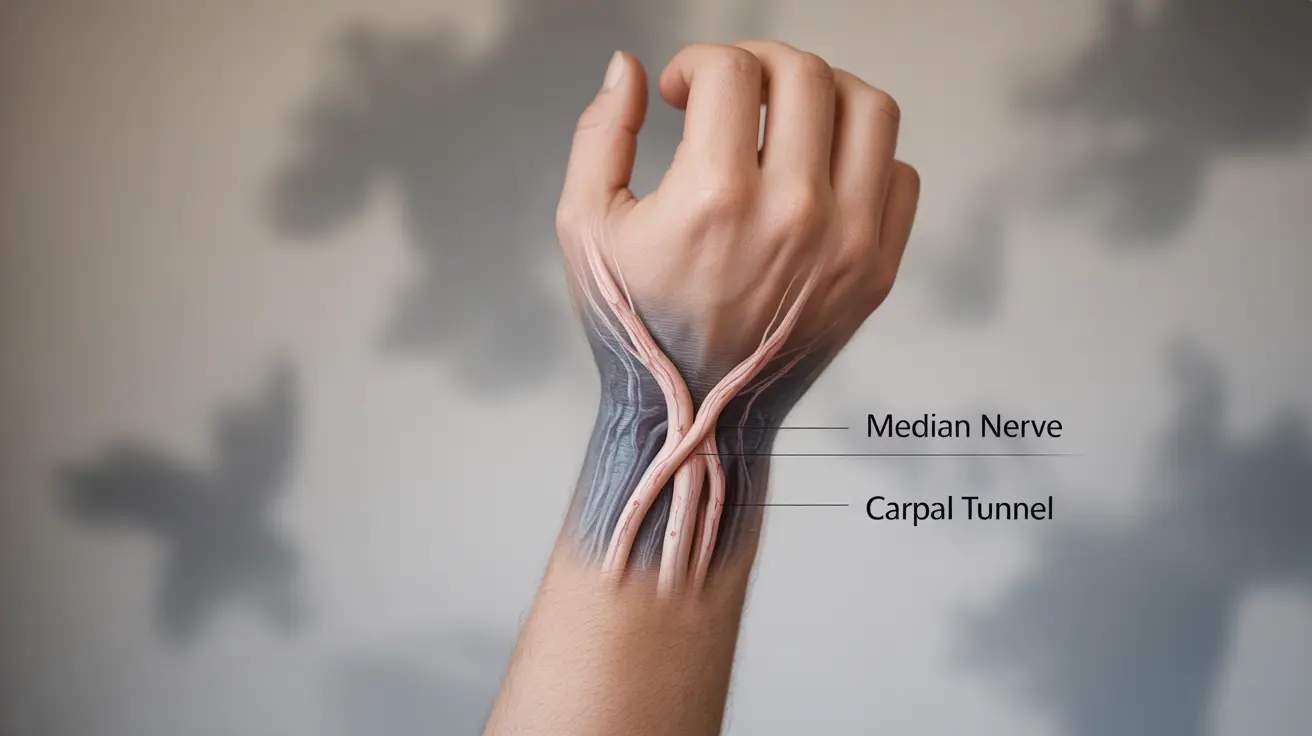If you're experiencing discomfort in your hands and wrists, you might wonder about the relationship between carpal tunnel syndrome and swelling. This common condition affects millions of people, and understanding how swelling plays a role is crucial for proper diagnosis and treatment.
Let's explore the connection between carpal tunnel syndrome and swelling, including what causes it, how to recognize the symptoms, and when to seek medical attention.
The Connection Between Carpal Tunnel Syndrome and Swelling
Carpal tunnel syndrome occurs when the median nerve, which runs through a narrow passage in your wrist called the carpal tunnel, becomes compressed. Swelling in or around this tunnel can increase pressure on the nerve, leading to various symptoms.
Types of Swelling Associated with Carpal Tunnel
People with carpal tunnel syndrome may experience two distinct types of swelling:
- Actual physical swelling of the tissues around the carpal tunnel
- A subjective feeling of swelling or fullness in the fingers and hand, even when no visible swelling is present
Common Causes of Swelling in Carpal Tunnel Syndrome
Several factors can contribute to swelling that affects the carpal tunnel:
- Repetitive hand and wrist movements
- Pregnancy and hormonal changes
- Inflammatory conditions like rheumatoid arthritis
- Diabetes
- Obesity
- Thyroid conditions
- Trauma or injury to the wrist
Impact of Repetitive Movements
Repetitive hand movements, especially those involving the wrist, can cause inflammation and swelling of the tendons that pass through the carpal tunnel. This is particularly common in:
- Office workers who type frequently
- Assembly line workers
- Musicians
- Craftspeople and artists
- Construction workers
Recognizing Warning Signs and Symptoms
Key indicators that warrant attention include:
- Numbness or tingling in the fingers
- Pain that radiates from the wrist to the arm
- Weakness in grip strength
- Difficulty performing fine motor tasks
- Symptoms that worsen at night
- Persistent swelling around the wrist area
Treatment Options for Swelling and Symptoms
Several treatment approaches can help manage swelling and relieve carpal tunnel syndrome symptoms:
- Wrist splinting, especially at night
- Anti-inflammatory medications
- Ice therapy for acute swelling
- Ergonomic modifications to work space
- Physical therapy exercises
- Cortisone injections
- Surgery in severe cases
Prevention Strategies
To minimize the risk of developing carpal tunnel syndrome and associated swelling:
- Take regular breaks from repetitive activities
- Maintain proper posture and wrist position
- Use ergonomic tools and equipment
- Perform wrist-strengthening exercises
- Maintain a healthy weight
- Manage underlying health conditions
Frequently Asked Questions
Does carpal tunnel syndrome cause visible swelling or just a feeling of swelling in the fingers?
Carpal tunnel syndrome can cause both visible swelling around the wrist area and a sensation of swelling in the fingers, even when no visible swelling is present. The feeling of swelling is often due to nerve compression.
What medical conditions can cause swelling that leads to carpal tunnel syndrome?
Several medical conditions can cause swelling leading to carpal tunnel syndrome, including pregnancy, diabetes, rheumatoid arthritis, thyroid disorders, and obesity. These conditions can cause fluid retention or inflammation that affects the carpal tunnel.
How can repetitive hand movements contribute to swelling and carpal tunnel symptoms?
Repetitive hand movements can cause inflammation of the tendons that pass through the carpal tunnel, leading to swelling and increased pressure on the median nerve. This inflammation can result from overuse and inadequate rest between activities.
When should I see a doctor if I experience swelling along with numbness or pain in my hand?
Seek medical attention if you experience persistent numbness, pain, or swelling that lasts more than a few weeks, interferes with daily activities, or wakes you from sleep. Immediate care is needed if you have sudden onset of severe symptoms or after injury.
What are the best treatments to reduce swelling and relieve carpal tunnel syndrome symptoms?
The most effective treatments include wearing a wrist splint, taking anti-inflammatory medications, applying ice therapy, performing specific exercises, and making ergonomic modifications. Severe cases may require cortisone injections or surgery for relief.




